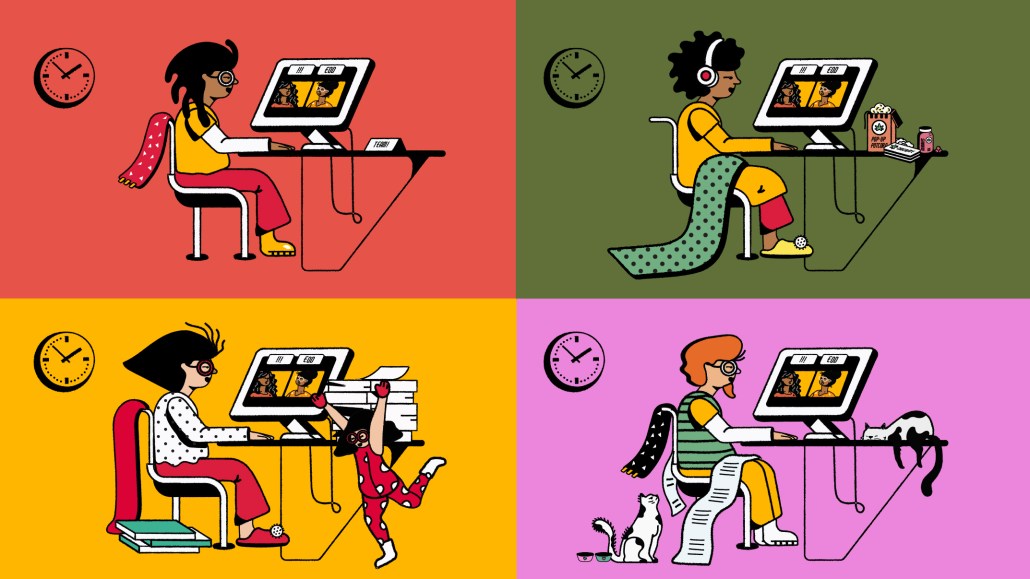Insights from CTV leaders at Dentsu, Horizon Media and more
Agencies’ latest DE&I initiatives aim to dig deeper into systemic challenges for diverse and minority media

A flurry of recent activity on the agency front related to diversity, equity and inclusion seems to indicate that real progress to address their role in fostering systemic issues around racism might be here. Even if it doesn’t happen overnight as the industry’s players continue to grapple with new definitions and guidelines.
Perhaps the biggest headline of the last 24 hours was Publicis Media announcing the launch of the Once & For All Coalition, a two-year initiative with a three-fold mission: to tackle the removal of barriers to financially support minority-owned media, to invest in a range of content and to create guidelines of best practices to directly invest in them.
The coalition consists of 21 of Publicis’ clients (it’s open to all of Publicis’ clients, which include Best Buy, GSK, Yum Brands, J.M. Smucker Co. and others) as well as 23 mostly Black and Hispanic media companies, both traditional and emerging (including Black Enterprise, iHeart Media and Univision). The ANA-backed Alliance for Inclusive and Multicultural Marketing (AIMM) is also involved, and other industry groups are expected to join, according to Lisa Torres, Publicis Media’s culture quotient president.
Separately, Nielsen is part of the alliance but also confirmed it is working on its own independent effort to track minority media spending. Stacie de Armas, Nielsen’s senior vp of diverse insights and initiatives, explained that the principal obstacle to launching it today is getting the industry to agree.
“We’re ready to do this today. The challenge has been the industry’s consensus around what defines minority-owned media,” said de Armas. “Brands also want to ensure they’re not only spending on minority-owned [companies] but have a good and equitable spend in minority-targeted … and minority-operated.”
ANA/AIMM is leading the discussion with brands, which will make it “easy” for Nielsen to establish new benchmarks and data sets, said de Armas.
Publicis’ Torres agreed it’s imperative for neutral parties to help set the parameters. “We at Publicis can’t change industry definitions, but AIMM and Nielsen and others can,” she said. “This is the most complicated of all shifts the industry has to undertake.”
Some of the low-hanging fruit Publicis hopes to tackle with its coalition are issues such as payment terms, which some agencies and clients set for up to 120 days or longer — time frames that a small minority media company can’t afford to wait. Tackling such issues “can open the doors to making investment easier,” said Nielsen’s de Armas.
Via its APX Content Ventures unit, Publicis Media also committed to spending $25 million to create original content to “amplify diverse voices, empower women and build community, connection and trust,” according to a company statement. The unit has already made a project with National Geographic in partnership with actress Gal Gadot in the U.S.
“There’s an RFP out with specific criteria, to begin to surface content that is perhaps not making it to the top, and helping to get that produced and distributed,” said Torres. “We want to make sure the dollars are hitting the right hands, assuring there’s equitable distribution all the way around. If I put money on Facebook, how much of that actually makes it in the creator’s hands? This is a way for us to control that.”
But again, it comes down to who exactly to include, at least when it comes to Nielsen’s desire to launch media-spending benchmarking on DE&I-related media. “We want to include every diverse segment, not only Black, Hispanic, Asian but also women, and LGBTQ. But we’re looking to the industry for the guidelines,” said de Armas.
One important distinction is that Nielsen, at least for now, doesn’t plan to charge extra for these services, and is considering a grant-like process for smaller minority-owned media to be able to afford some of Nielsen’s other services for which it does charge. “This is nothing we’re going to turn around and market to the industry,” de Armas added. “We can give at no cost to the industry these benchmarks to remove barriers to investment in minority media.”
In related news, Havas Media said it is launching BIPOC Media Connections, a program it said is designed to divert more direct investment toward Black and Hispanic radio stations across the U.S. It has enlisted more than 180 stations to participate in the program.
More in Marketing

Creator marketing has the reach — CMOs want the rigor
The creator economy got big enough to be taken seriously.

Pitch deck: Why Google believes its latest AI Max product is a game changer for search campaigns
AI Max, which launched May and rolls out this summer, aims to provide advertisers with a “one-click feature suite” for search campaigns.

Retail media’s mid-2025 reality: Why advertisers are going all in on full-funnel
Retail media’s meteoric rise may finally be leveling off — and that’s forcing advertisers to take a harder look at what they’re getting for their money.








